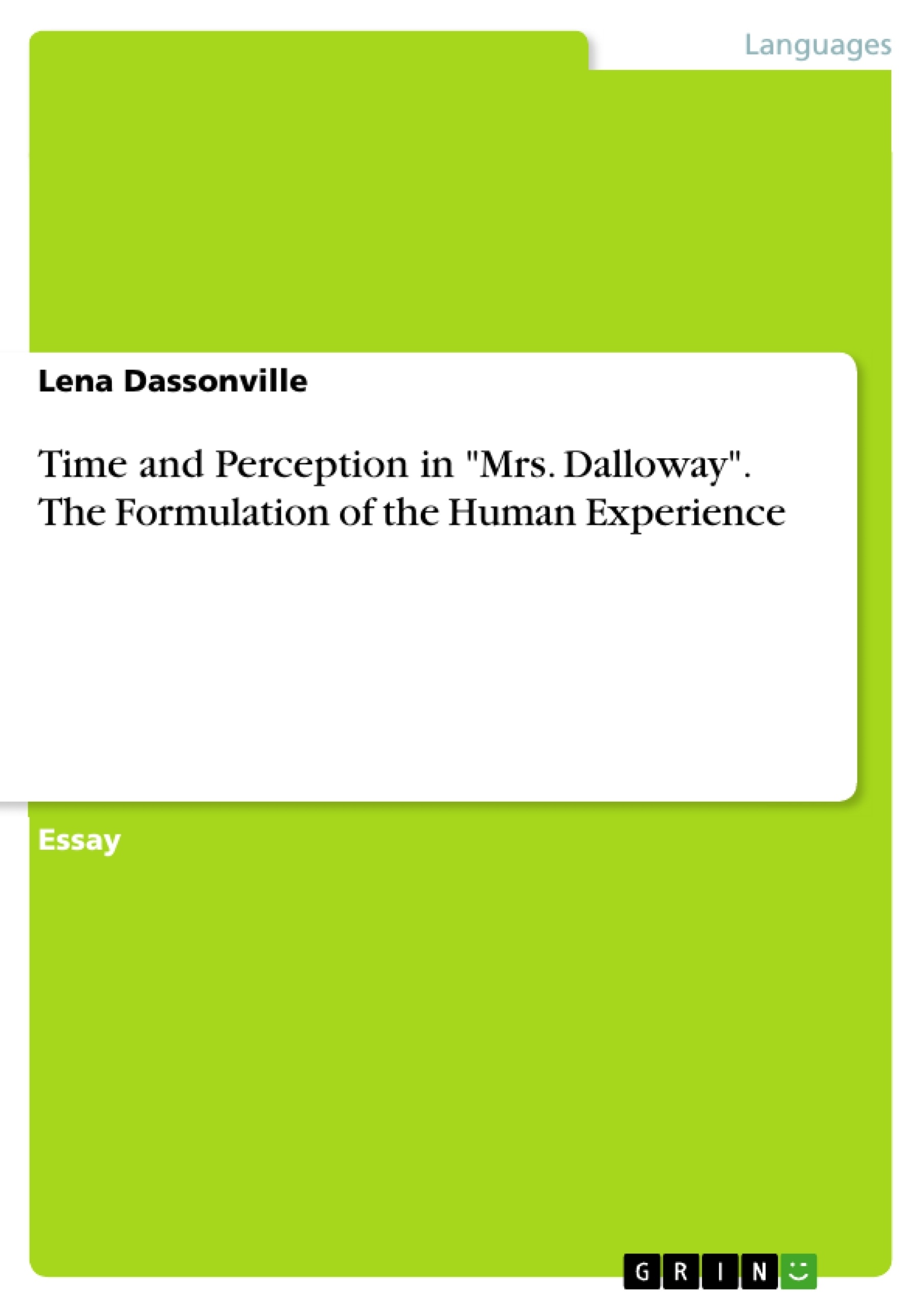Virginia Woolf’s classic modernist work, "Mrs. Dalloway", interrogates the inner–workings of every day life, exposing and unfurling the idiosyncrasies, complexities, and intimacies that are so surreptitiously ensconced within all human interaction. Though "Mrs. Dalloway" covers the span of a single day, Woolf’s treatment of time is much more complex than a linear, chronological expounding of a group of people’s activities leading up to a much anticipated soirée. Indeed, one of Woolf’s greatest strengths as a writer is her ability to unveil the significance behind every action and structure; to make meaningful many of the mechanisms and interactions which we usually deem common, menial or insubstantial. By detailing varying perceptions and probing remembrances and interpersonal linkages, Woolf demonstrates the complexity and diversity of human experience.
Inhaltsverzeichnis (Table of Contents)
- Time and Perception in Mrs. Dalloway: The Formulation of the Human Experience
- The Mysterious Car
- Multiplicity of Perception
- The Triumph of Civilization
- The Passage of Time
Zielsetzung und Themenschwerpunkte (Objectives and Key Themes)
This essay explores the portrayal of time and perception in Virginia Woolf's *Mrs. Dalloway*, showcasing how the novel utilizes these concepts to delve into the complexities of human experience. The essay examines the novel's exploration of the human mind's interaction with the outside world, specifically focusing on how individuals perceive and interpret events and objects. It analyzes the dynamic interplay between past and present, highlighting how memories shape the present moment and contribute to the richness of human experience.
- The subjective nature of perception and its impact on understanding the world
- The complexities of human relationships and the intertwining of past and present
- The significance of seemingly mundane events and interactions in shaping individual experience
- The use of time as a literary device to reveal the inner workings of human consciousness
- The role of memory and personal histories in shaping individual perspectives
Zusammenfassung der Kapitel (Chapter Summaries)
- The Mysterious Car: This chapter focuses on the reaction of various characters to a car with a mysterious occupant driving through London. It highlights the diverse interpretations and meanings people attribute to the same event based on their individual perspectives and experiences.
- Multiplicity of Perception: This chapter examines how Woolf utilizes literary devices like sentence structure and word choice to showcase the multifaceted nature of perception. It demonstrates how differing interpretations of the same object or event can create a complex understanding of human consciousness.
- The Triumph of Civilization: This chapter explores the clash between Septimus's experience of trauma and Peter's romanticized view of England's modernity and civilization. It analyzes the way the same societal structures can be perceived as both oppressive and progressive, depending on the individual's perspective.
- The Passage of Time: This chapter analyzes how Woolf employs the passage of time as a central motif throughout the novel, highlighting the constant interplay between past and present in shaping individual experiences. It discusses the way the physical passage of time is juxtaposed with the characters' internal landscapes of memories and personal histories.
Schlüsselwörter (Keywords)
This essay explores the intersection of several key themes, including perception, time, memory, and the complexities of human experience. It delves into the subjective nature of interpretation, examining how individuals' perceptions of objects, events, and societal structures shape their understanding of the world. The analysis focuses on how these themes are intertwined to create a multi-layered exploration of human consciousness in Virginia Woolf's *Mrs. Dalloway*. The essay explores the significance of mundane moments and personal histories in shaping individual lives, drawing attention to the dynamic interplay between past and present within the novel.
- Quote paper
- Lena Dassonville (Author), 2016, Time and Perception in "Mrs. Dalloway". The Formulation of the Human Experience, Munich, GRIN Verlag, https://www.grin.com/document/346602



